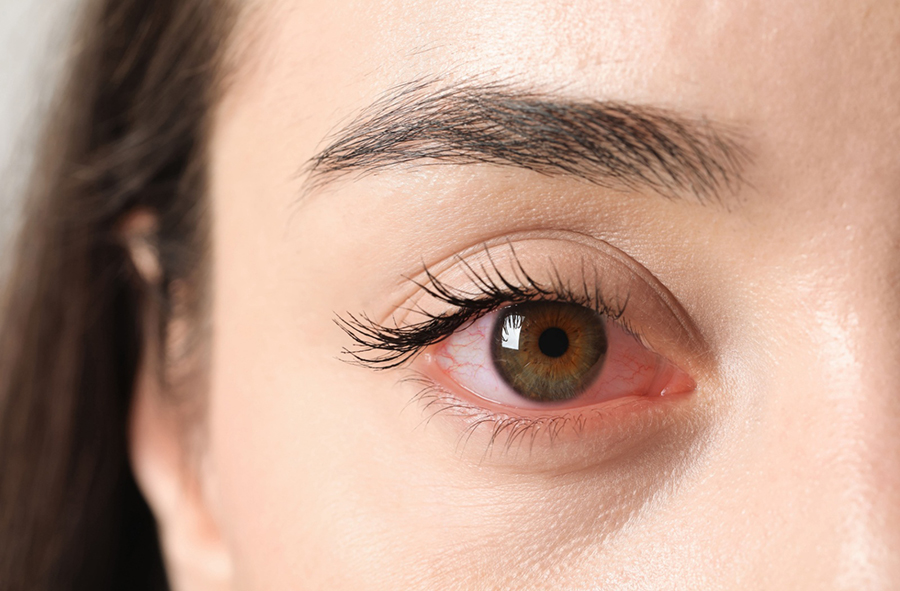

Red, itchy, irritated eyes often lead many people to the same conclusion: pink eye. Known medically as conjunctivitis, pink eye is a common eye condition that causes inflammation of the conjunctiva—the thin membrane covering the white part of the eye. However, it is not the only cause of red or irritated eyes, and mistaking other issues for conjunctivitis can lead to improper treatment and unnecessary discomfort.
Conditions such as dry eye, blepharitis, eye allergies, styes, and even subconjunctival hemorrhages can mimic the symptoms of pink eye. Each of these has distinct causes and treatments, making accurate diagnosis essential.
What Is Pink Eye?
Pink eye is an inflammation or infection of the conjunctiva—the thin, transparent membrane that lines the inside of your eyelid and eyeball. When the small blood vessels in the conjunctiva become swollen and irritated, they become more visible, giving the eye a reddish or pink appearance. It can be caused by viruses, bacteria, allergies, or irritants such as chemicals or foreign objects.
The Power of an Accurate Diagnosis
Although pink eye is a well-known condition, it can be challenging to self-diagnose correctly. Many eye conditions can cause similar symptoms such as redness, watering, discharge, and irritation.
Misdiagnosis can lead to delayed treatment, prolonged discomfort, or even complications. An accurate diagnosis from an eye doctor ensures appropriate care, prevents worsening of symptoms, and rules out more serious concerns. Optometrists use in-depth testing and imaging to understand the underlying causes of your symptoms, leading to more effective treatment plans.
5 Eye Conditions You Might Be Mistaking for Pink Eye
1. Dry Eye vs. Pink Eye
Dry eye disease occurs when your eyes either do not produce enough tears or the tears evaporate too quickly. A lack of quality tears can lead to discomfort, burning, redness, and sometimes blurry vision—symptoms that closely resemble those of pink eye.
Unlike pink eye, which often develops quickly and may include thick discharge or contagious elements (especially in viral or bacterial forms), dry eye tends to develop gradually and is usually a chronic condition. It typically does not involve a sticky discharge, though stringy mucus may be present.
If your symptoms persist over time or worsen during screen use or in dry environments, dry eye may be the true cause. Treatment includes artificial tears, warm compresses, and lifestyle adjustments. Severe cases may benefit from prescription eye drops or in-office therapies.
3. Blepharitis vs. Conjunctivitis
Blepharitis is an inflammation of the eyelid margins, often caused by clogged oil glands, bacteria, or skin conditions such as rosacea. Like pink eye, it can cause red, irritated, and watery eyes.
However, key differences include:
Blepharitis causes crusty flakes or oily buildup in the lash line.
It tends to come and go over time rather than appear suddenly.
It mainly affects the eyelids, whereas conjunctivitis involves the clear tissue over the white of the eye.
Because blepharitis is a chronic condition, maintaining consistent eyelid hygiene through the use of lid scrubs, warm compresses, and possibly medicated ointments is crucial and misdiagnosing it as pink eye can result in unnecessary antibiotic use and missed relief strategies.
3. Pink Eye or Something Else?
Conjunctivitis itself comes in several forms—bacterial, viral, and allergic. Each of these looks slightly different and responds to other treatments.
Allergic conjunctivitis is often confused with infectious pink eye, but there are a few key differences:
Itchiness is the main symptom in allergies, not burning or stinging.
Sneezing and nasal symptoms often accompany allergic conjunctivitis.
It typically affects both eyes simultaneously.
It is not contagious.
Allergic pink eye is best treated with antihistamines, cool compresses, and allergen avoidance—not antibiotics.
4. Subconjunctival Hemorrhage
A subconjunctival hemorrhage occurs when a small blood vessel breaks beneath the conjunctiva, leading to a bright red spot on the white of the eye. It often looks alarming but is usually harmless.
Unlike pink eye:
It does not cause discomfort or discharge.
Redness is localized, not diffuse.
It usually resolves on its own in 1 to 2 weeks.
Subconjunctival hemorrhage can result from straining, coughing, sneezing, or minor trauma. While it does not require treatment, an eye exam is recommended to rule out underlying causes, especially if the issue recurs.
5. Stye or Pink Eye?
A stye is a painful, red bump that forms on the eyelid, often resembling a pimple. It is caused by a blocked or infected oil gland. While both styes and pink eye can involve redness, swelling, and discomfort, they are distinct conditions.
Differences Include:
A stye is a localized infection that may form a visible bump or abscess.
Pain is more centered around the eyelid, not the eye itself.
Styes typically resolve with warm compresses, whereas conjunctivitis may require drops or ointments, depending on the underlying cause.
Misdiagnosing a stye as pink eye may result in unnecessary antibiotic use or missed signs of lid hygiene issues.

When to See an Eye Doctor
If you are experiencing any of the following, it is time to see your optometrist:
Eye redness that lasts more than a couple of days
Pain or light sensitivity
Blurred vision or visual disturbances
A sensation of something in your eye that will not go away
Swelling, discharge, or crusting
Recurrent eye irritation
Early intervention can prevent complications and lead to faster relief. Avoid using leftover eye drops or self-diagnosing based on internet searches—a professional evaluation is always the best option.
Protect Your Vision with Expert Care
Red or irritated eyes might seem like a minor problem, but they can be a symptom of several underlying issues. Whether it is dry eye, blepharitis, a stye, or true pink eye, getting the correct diagnosis makes all the difference in finding lasting relief and protecting your eye health.
At ProVision, our experienced optometrists utilize innovative tools to assess your symptoms and provide personalized care. If you or your child has red, uncomfortable eyes and you are unsure of the cause, schedule an appointment with our friendly team today. Let us help you regain clear, comfortable vision.










